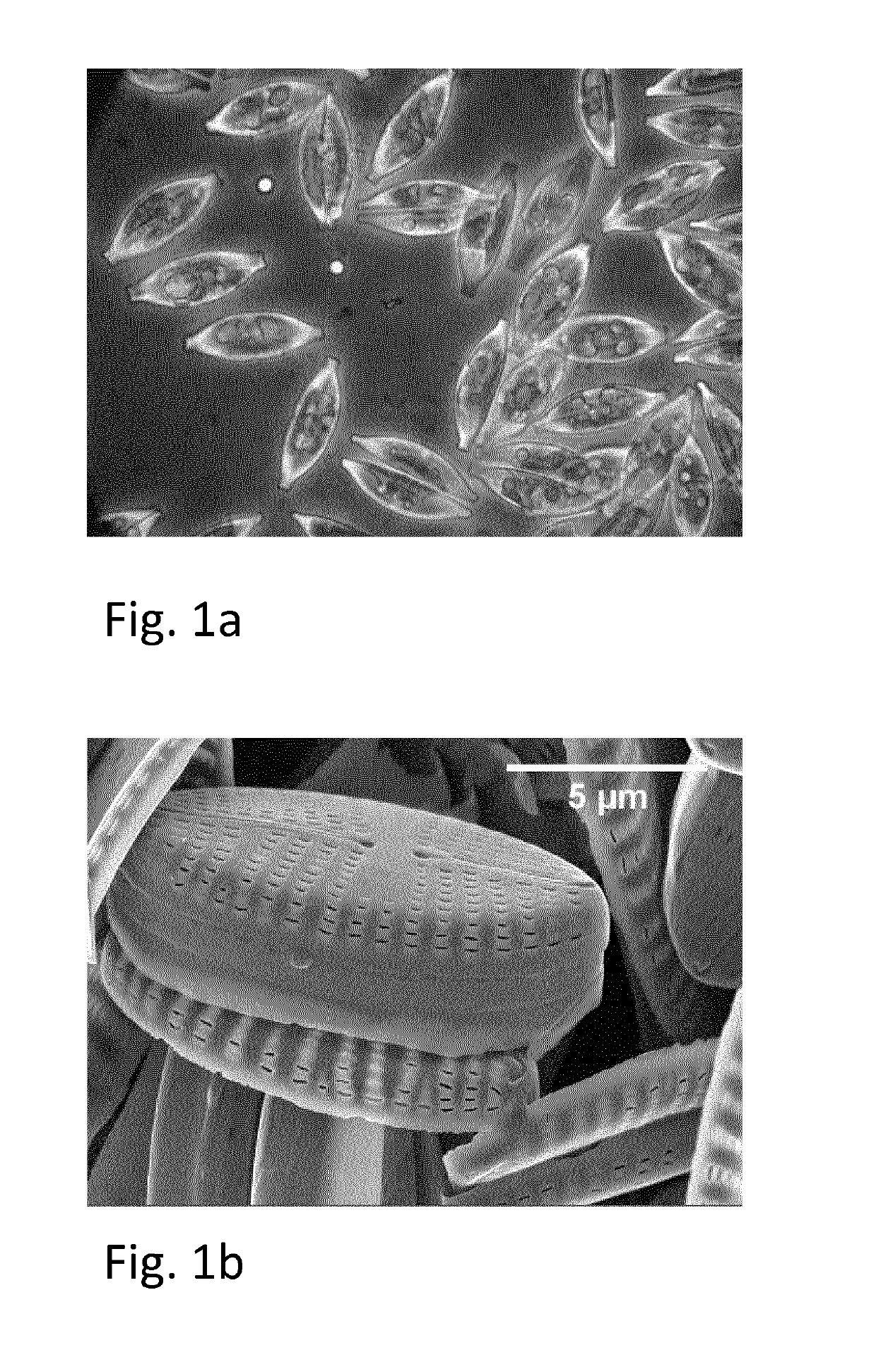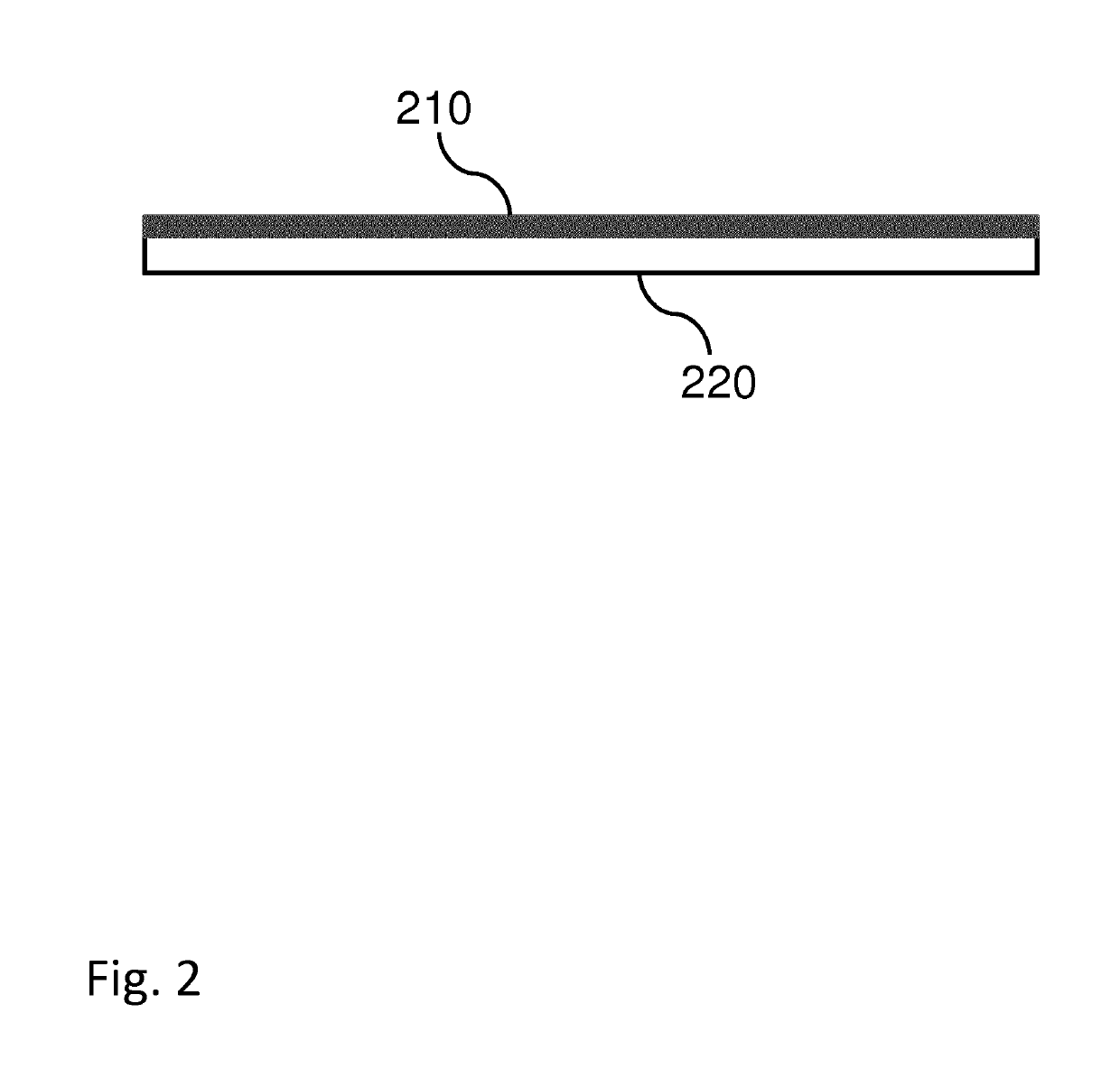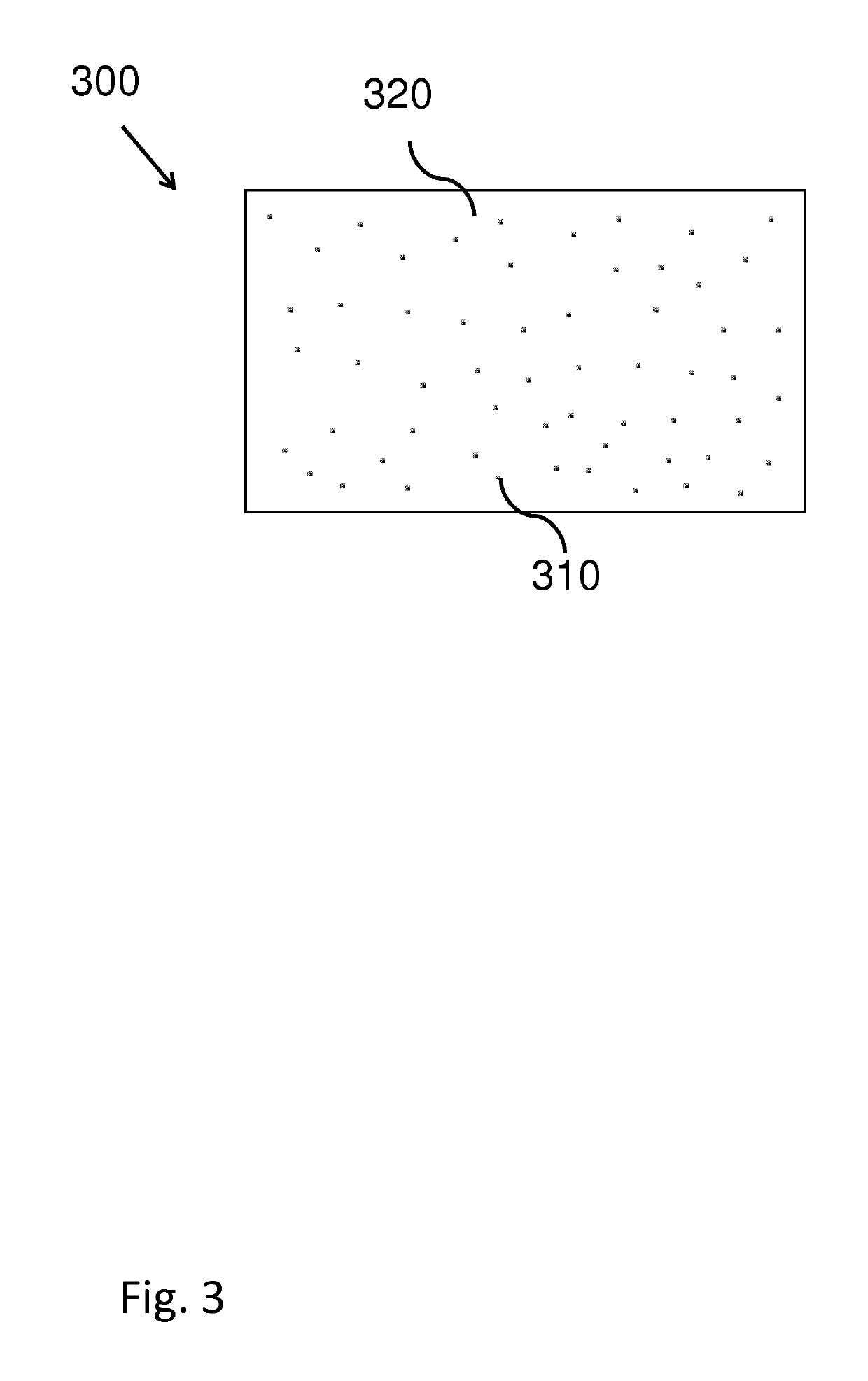Frustules extracted from benthic pennate diatoms harvested from an industrial biofilm process
a technology of biofilm and rustules, which is applied in the direction of electrolytic capacitors, renewable energy machines, sustainable manufacturing/processing, etc., can solve the problem that diatoms produce a large amount of oxygen we breathe, and achieve the effect of improving the uptake rate, efficient light uptake, and prolonging the pores
- Summary
- Abstract
- Description
- Claims
- Application Information
AI Technical Summary
Benefits of technology
Problems solved by technology
Method used
Image
Examples
example 2
Solar Cell Application
Method
[0134]Commercial solar cells (BP Solar 0.446W Polycrystalline Photovoltaic Solar Panel) were used for all tests. The solar cell performances were measured ‘as received’ as references. In order to achieve a stable and monolayer coating, the cell surfaces were plasma cleaned (oxygen plasma) and treated with an amino-silane monolayer via vapour phase deposition ((3-Aminopropyl)triethoxysilane, APTES) at 70 □ C. All deposition tests on solar panels were performed with the same batch of NSFD powder (Batch 3C). NSFD dispersion of 0.2 wt. % was prepared by weighing 0.06 g of the calcined powder and dispersing it in 30 mL of 1 wt. % solution of TritonX100 in milliQ water. This was placed under magnetic stirring overnight. Thereafter, the dispersion was centrifuged at 2.5 krpm; (1467 g) for 2 minutes and the supernatant was replaced with fresh milliQ water. This process was repeated and the final milliQ dispersion was labelled Disp. A. An aliquot of Disp. A was di...
PUM
 Login to View More
Login to View More Abstract
Description
Claims
Application Information
 Login to View More
Login to View More - R&D
- Intellectual Property
- Life Sciences
- Materials
- Tech Scout
- Unparalleled Data Quality
- Higher Quality Content
- 60% Fewer Hallucinations
Browse by: Latest US Patents, China's latest patents, Technical Efficacy Thesaurus, Application Domain, Technology Topic, Popular Technical Reports.
© 2025 PatSnap. All rights reserved.Legal|Privacy policy|Modern Slavery Act Transparency Statement|Sitemap|About US| Contact US: help@patsnap.com



